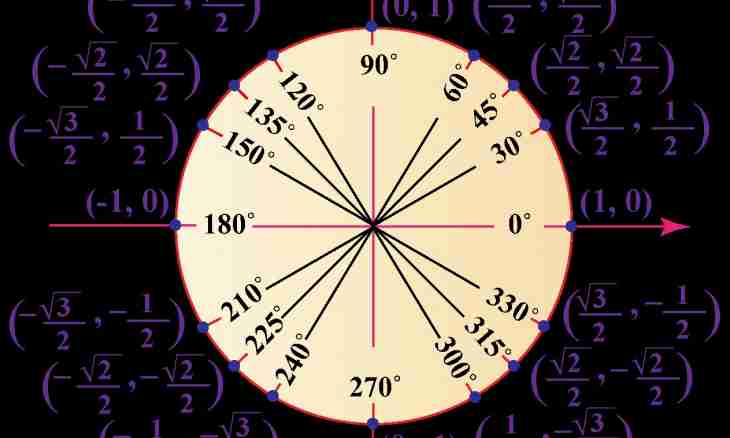The cosine is one of two trigonometrical functions referred to group of "straight lines". One of the simplest definitions of such functions was brought out of ratios of lengths of the parties and sizes of corners in tops of a rectangular triangle long ago. Calculation of value of a cosine of an acute angle of such triangle by these basic definitions perhaps in several ways which choice depends on the known basic data.
Instruction
1. If the size of the acute angle interesting you is known, then calculation will come down to finding of value of a cosine by means of any calculator or the online calculator. If you choose the calculator, then use, for example, the program of this sort which is built in Windows OS. It is started through the main menu on the Start-up button in which the reference "Calculator" is placed in the Subsection "Office" of the section "Standard" opened by the choice in the menu of the All Programs point.
2. If the size not of that corner which cosine is required to be calculated, and the corner adjoining the opposite end of a hypotenuse is known, then you recognize that the sum of all corners of a triangle is always equal in Euclidean geometry 180 °. Using this classical theorem calculate the necessary corner - take away from 180 ° the known corner and a right angle (90 °). After that basic data and a method of calculation will coincide with those that are described in the previous step.
3. If sizes of acute angles of a rectangular triangle are unknown, but there are data on lengths of its parties, then use basic definition of this trigonometrical function for finding of value of a cosine of the necessary corner. It claims that the cosine of an acute angle is equal to a ratio of lengths of a leg and the hypotenuse forming this corner.
4. If length of that leg which adjoins to the necessary corner is unknown, then it can be calculated, proceeding from Pythagorean theorem, and then to resort to the method described in the previous step. As you for certain remember, this theorem claims that the sum of squares of lengths of legs of a rectangular triangle is always equal to a square of length of its hypotenuse. Therefore for calculation of length of the missing party find a square root from the difference between squares of lengths of a hypotenuse and the known leg, and then act as it is described in the previous step.
5. If hypotenuse length is unknown, then use the same theorem - find value of a square root from the sum of the squared lengths of legs and come back to the method described in the third step.

